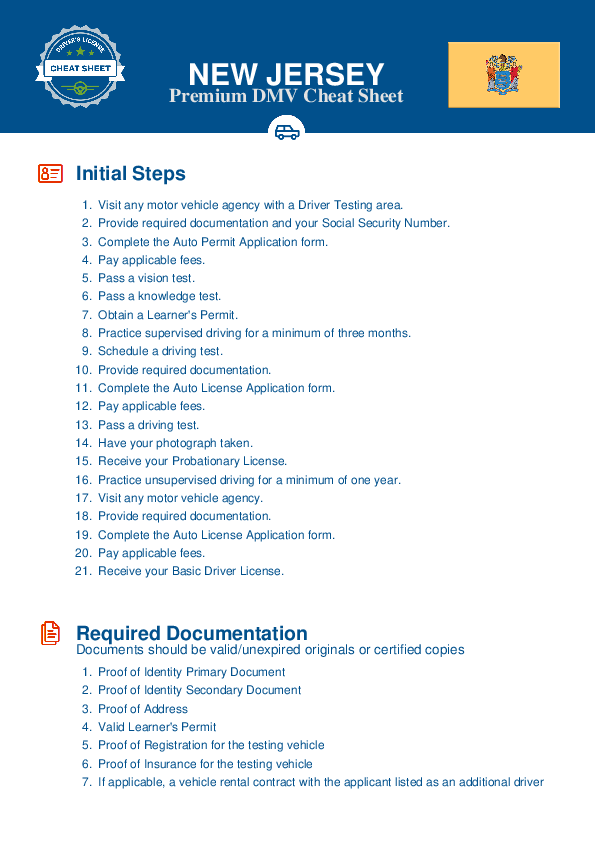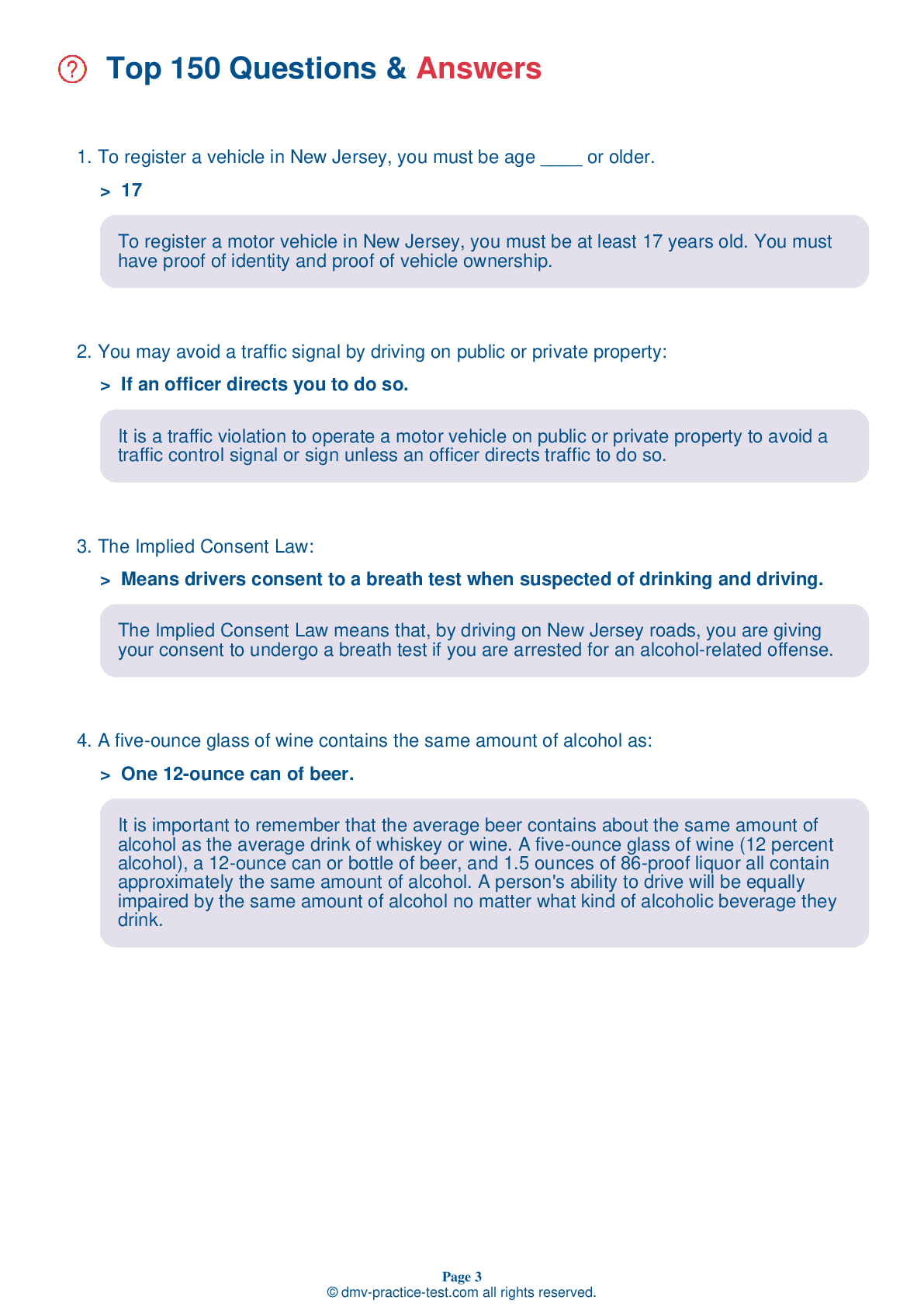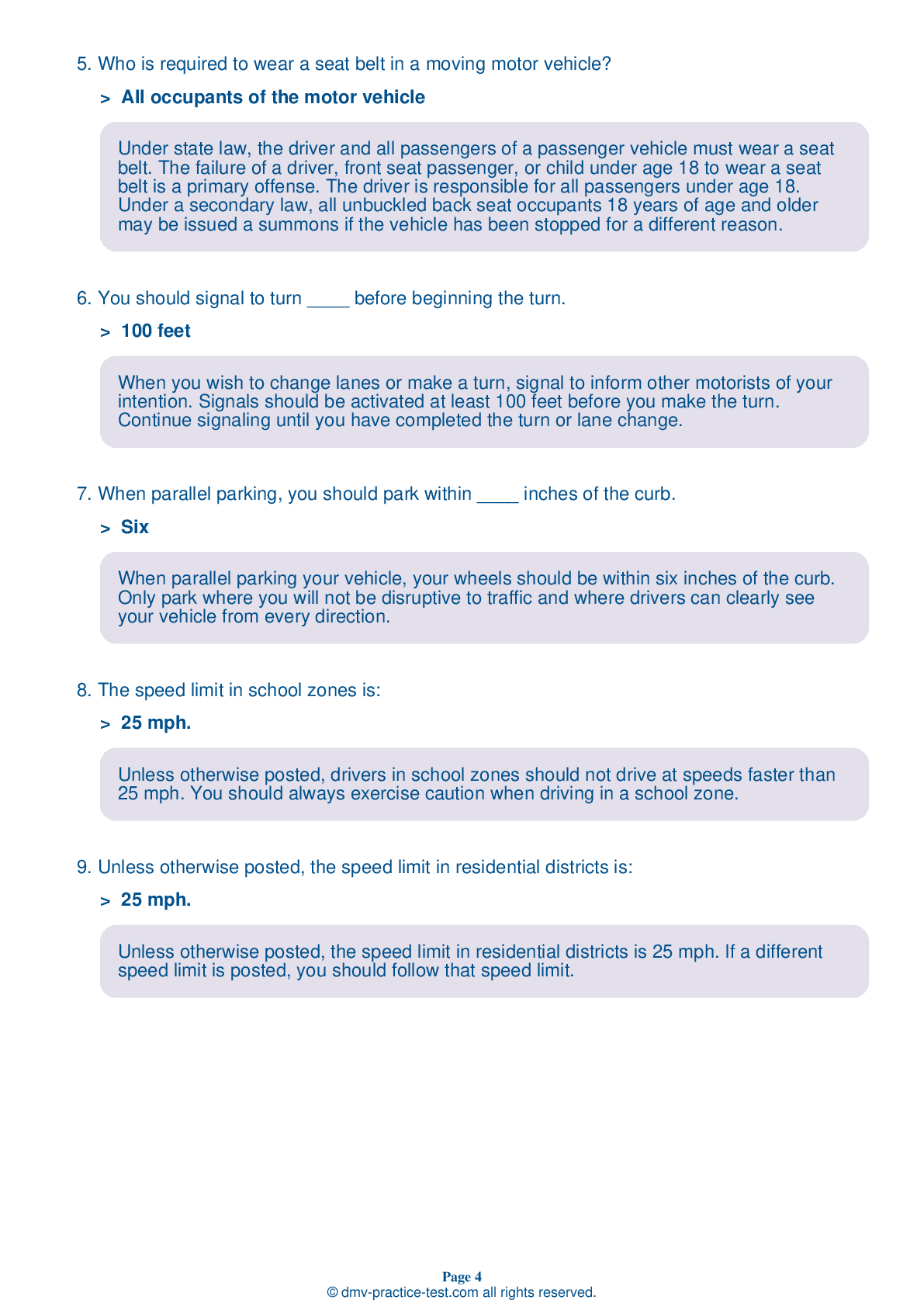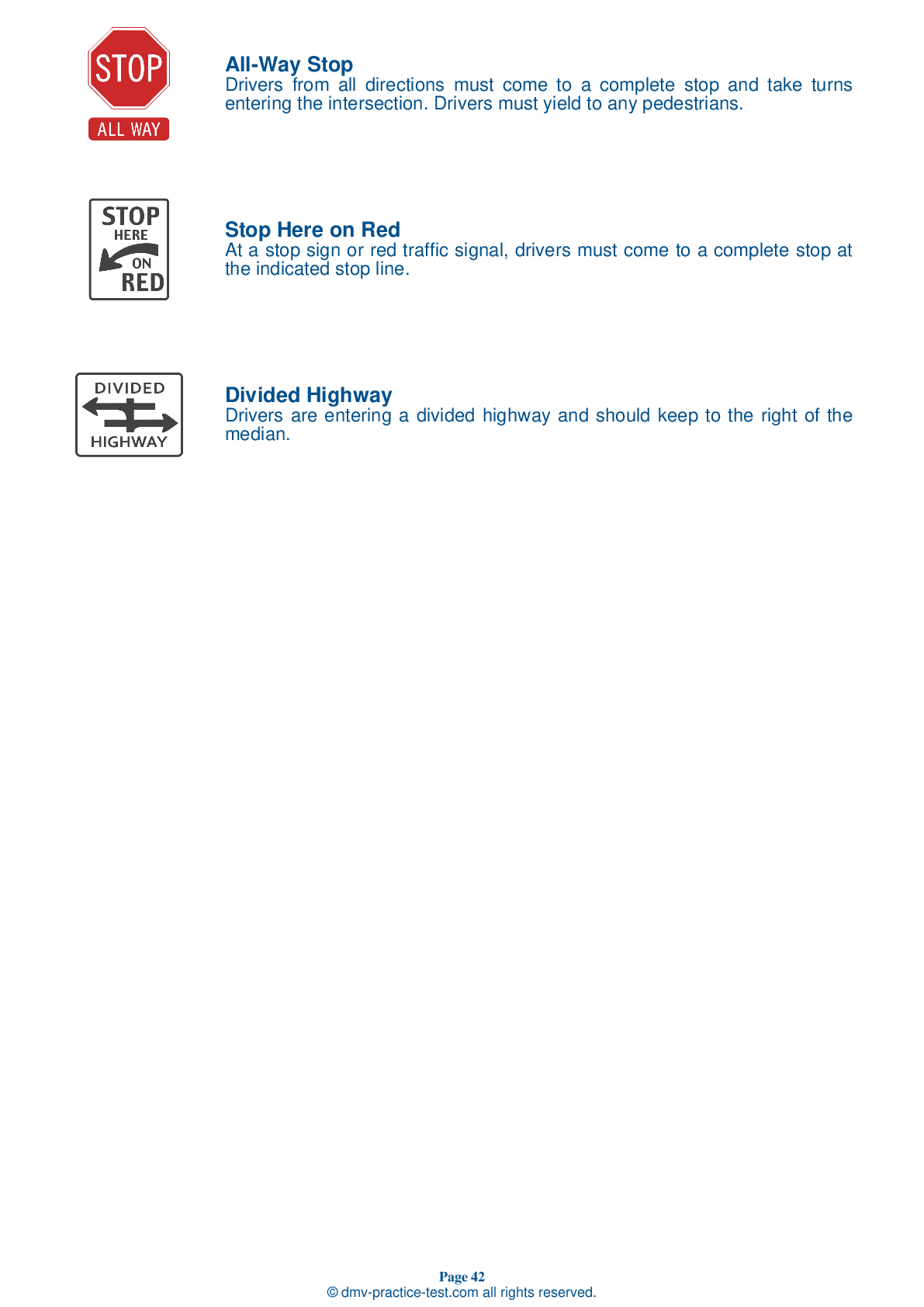FREE New Jersey DMV Practice Test #23
New Jersey's DMV practise examinations have been revised for January 2025. It includes questions based on the New Jersey Driver Handbook's most essential traffic signals and regulations for 2025. Use actual questions that are very similar (often identical!) to the DMV driving permit test and driver's licence exam to study for the DMV driving permit test and driver's licence exam.
On the practise exam, each question gets a tip and explanation to help you remember the concepts. The written component of the official New Jersey DMV test will include questions about traffic rules, traffic signs, and driving statutes, as well as knowledge from the Driver Handbook.
To obtain a passing grade, you must correctly answer 40 of the 50 questions. Take this practise test from the New Jersey Department of Motor Vehicles to help you prepare for your instruction permit or driver's licence.
The DMV exam is available in several languages.
Using any kind of testing assistance will result in an automatic fail, and the DMV may take additional action against your driver's licence, so stay away from it.
1 . Who is required to wear a seat belt in a moving motor vehicle?
Under state law, the driver and all passengers of a passenger vehicle must wear a seat belt. The failure of a driver, front seat passenger, or child under age 18 to wear a seat belt is a primary offense. The driver is responsible for all passengers under age 18. Under a secondary law, all unbuckled back seat occupants 18 years of age and older may be issued a summons if the vehicle has been stopped for a different reason.
2 . Which statement about speed is true?
As speed increases, the chance of a fatality increases. If you are moving faster than 80 miles per hour, you have almost no chance of living through a crash. Driving more slowly than other traffic can also be dangerous because other motorists may become impatient and make dangerous moves to pass you.
3 . This sign means:
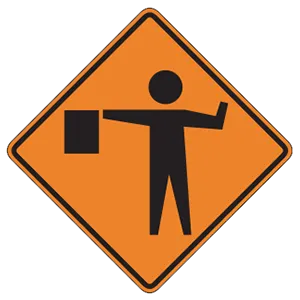
This sign indicates that there is a flagger ahead controlling traffic in a construction area.
4 . Drivers who eat and drink while driving:
Choosing to eat, drink, or smoke while driving is dangerous because these actions require a driver to remove their hands from the wheel and their eyes from the road. Drivers who engage in distracting activities while driving have trouble staying in their lanes and controlling their vehicles.
5 . When faced with an oncoming car to the left and a bicyclist to the right, you should:
When there is more than one potential hazard on the road, you should ensure that you only have to deal with one of them at a time. For example, when there is a bicyclist on the right that you want to pass and an oncoming car to the left, you should not try to squeeze between both at the same time. Instead, let the oncoming car pass, and then pass the bicyclist.
6 . To avoid collisions with vehicles in your blind spots, you should:
Before turning or changing lanes, turn your head and glance over your shoulder in the direction of your move to see if your blind spot is clear. Never rely on your mirrors alone.
7 . What does a single dashed yellow line separating traffic mean?
Yellow lines separate traffic moving in opposite directions. A single dashed yellow line in the center of a road indicates that vehicles traveling in both directions are permitted to pass. Drivers may only begin a pass if they will not interfere with any oncoming traffic.
Need Car Insurance? No problem!
Compare the best rates in New Jersey and find a personalized policy that meets your needs.
1. Are You Currently insured ?
2. Married ?
3. Do you own your Home?
4. Do you have more than 1 car ?
5. Have you or a Family Member Honorably Served in U.S. Military ?
6. Your Name
7. Age
8. Zip code
IMPORTANT REMINDER:Auto Insurance is Mandatory to drive in New Jersey. Get covered before you hit the road to avoid any fines.
Ranked by best match
